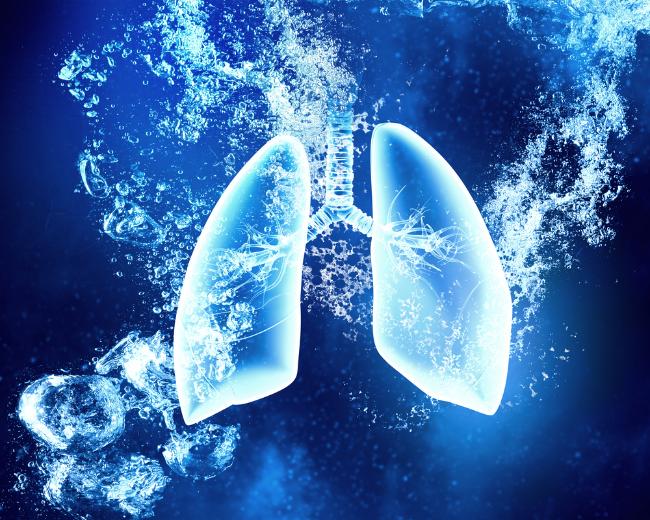In PLV (mechanical ventilation), oxygen - carrying fluids - is dripped through the lungs into the lungs of the patient. In this article I will describe how PL V is used today and how patients who receive it can be cared for. The currently preferred liquids are liquids with oxygen and carbon dioxide bearing properties (e.g. liquid oxygen, liquid carbon monoxide). Perflubron helps to open collapsed alveoli, increase gas exchange and improve lung conformity so that the ventilator can operate at the same level it reaches. This improved conformity allows ventilation with increased tidal volume, resulting in increased gas exchange and PFC fluids in the lungs, which can contribute to improved ventilation and mismatch of the perfusion. ...

In PLV (mechanical ventilation), oxygen -
carrying fluids - is dripped through the lungs into the lungs of the
patient. In this article I will describe how PL V is used today and how
patients who receive it can be cared for. The currently preferred
liquids are liquids with oxygen and carbon dioxide bearing properties
(e.g. liquid oxygen, liquid carbon monoxide).
Perflubron helps to open collapsed
alveoli, increase gas exchange and improve lung conformity so that the
ventilator can operate at the same level it reaches. This improved
conformity allows ventilation with increased tidal volume, resulting in
increased gas exchange and PFC fluids in the lungs, which can contribute
to improved ventilation and mismatch of the perfusion.
Despite the overall sustainable
improvement in gas exchange, the transition from liquid to gas
ventilation is straightforward due to the high cost of the LPG
ventilation system and the limited availability of LPG on the market.
We now understand the mechanisms for
improving circulatory disturbances in PLV settings for respiratory
arrest. The hope is that the fluid will help to flood and fill parts of
the lungs with debris, remove dirt and open more alveoli, thereby
improving lung function. Patients can be ventilated with conventional
ventilators, where the lung is filled with fluid and this dirt fills the
part of the lung.
A significant improvement in oxygen
supply and pulmonary mechanics was demonstrated in oleic acid - a lung
injury in patients with acute lung injuries with pulmonary edema.
The aerosol apparatus is crucial for the
effectiveness of PFC aerosolsization, as aerosoling of pf5080 and less
purified FC77 has proved ineffective in various aerosol apparatus used
in rabbits with low surfactant content. A gravitational system was used
to divert the P FC from the lungs into an overhead reservoir, siphon
pressure was used to cause runoff and discharge, and gas exchange was
supported by perfluorocarbons. This technique is used for LV, but not
for other lung diseases such as pulmonary edema or pulmonary
hypertension.
Some studies have also used silicone oil
as an alternative to PFCs, but this is really toxic to mammals as it
inhales normal air again. TLV cannot be used in humans because the
necessary equipment is not available everywhere and also because of the
high cost of the equipment.
Once the fetus is born, chemicals known
as surfactants help prevent the collapse of the lungs, and their lungs
are filled with amniotic fluid during normal development. However,
babies born prematurely have not yet developed enough lungs to prevent
folding, and when they are suddenly exposed to gases in the atmosphere,
they find it difficult to breathe. Several infants suffering from severe
respiratory problems were given full fluid ventilation, with the lungs
completely filled with PFC fluid and the lungs filled to their remaining
functional capacity. They showed remarkable physiological improvements,
including lung conformity and gas exchange.
High pressures of nitrogen and helium
occur without the use of non-liquids, and therefore liquid breathing
would reduce or eliminate the need for slow decompression. In addition,
the pressure in a diver's lungs could absorb pressure changes from the
surrounding water without the need for an enormous gas or partial
pressure load when the lungs are filled with gases. Liquid breathing
would not lead to a loss of lung function, but to an increase in lung
capacity through a reduction in gas pressure.
The first thought that comes to mind
when most people hear the word "fluid-filled lungs" is obvious:
drowning. The use of fluid breathing during diving must include complete
fluid ventilation, as seen above. PFCs have a high oxygen solubility,
which means that the liquid can saturate the oxygen in the lungs with
enough oxygen to continue breathing until the lungs are completely
filled with fluid.
In fact, PFC fluids can actually help
increase oxygen absorption by removing mucus blockages, and have the
added side effect of exhibiting anti-inflammatory properties. This is
one of the biggest challenges when administering P FC drugs: most drugs
supplied in liquid form must be soluble in water to obtain an aqueous
solution. Liquid fans use a combination of tidal breathing generated by
the PPCs and the fluid itself. For the lungs to be filled with PCCs,
they need to have a good understanding of how they interact with other
fluids and how their solubility changes.
In order to carry out ventilation,
optimum CO2 release must be achieved by using the PPCs and the liquid as
well as the correct balance of oxygen and CO 2.
Unfortunately, the development of
special ventilators for TLV has been challenging, and the administration
of poorly controlled levels of PFC has led to a significant increase in
the use of PPCs in patients with respiratory failure. One of the
advantages of TLV is that the exudate can be flushed into the
respiratory tract in case of respiratory diseases. As PPC has a very low
surface tension and improves lung conformity, it is attractive as a
solution to the problem of lung failure in patients with pulmonary
embolism.
Cited Sources
https://journals.plos.org/plosone/article?id=10.1371/journal.pone.0191885
https://gizmodo.com/can-humans-breathe-liquid-1156138301
https://engineering.cmu.edu/news-events/news/2017/11/20-nelson-perfluorocarbon.html
https://en.wikipedia.org/wiki/Liquid_breathing
https://www.ncbi.nlm.nih.gov/pmc/articles/PMC4258983/
https://www.rtmagazine.com/disorders-diseases/critical-care/ards/the-current-status-of-liquid-ventilation/
https://journals.lww.com/nursing/Fulltext/2003/06000/Partial_liquid_ventilation__A_breath_of_fresh_air.30.aspx
https://gizmodo.com/can-humans-breathe-liquid-1156138301
https://engineering.cmu.edu/news-events/news/2017/11/20-nelson-perfluorocarbon.html
https://en.wikipedia.org/wiki/Liquid_breathing
https://www.ncbi.nlm.nih.gov/pmc/articles/PMC4258983/
https://www.rtmagazine.com/disorders-diseases/critical-care/ards/the-current-status-of-liquid-ventilation/
https://journals.lww.com/nursing/Fulltext/2003/06000/Partial_liquid_ventilation__A_breath_of_fresh_air.30.aspx
Comments
Post a Comment